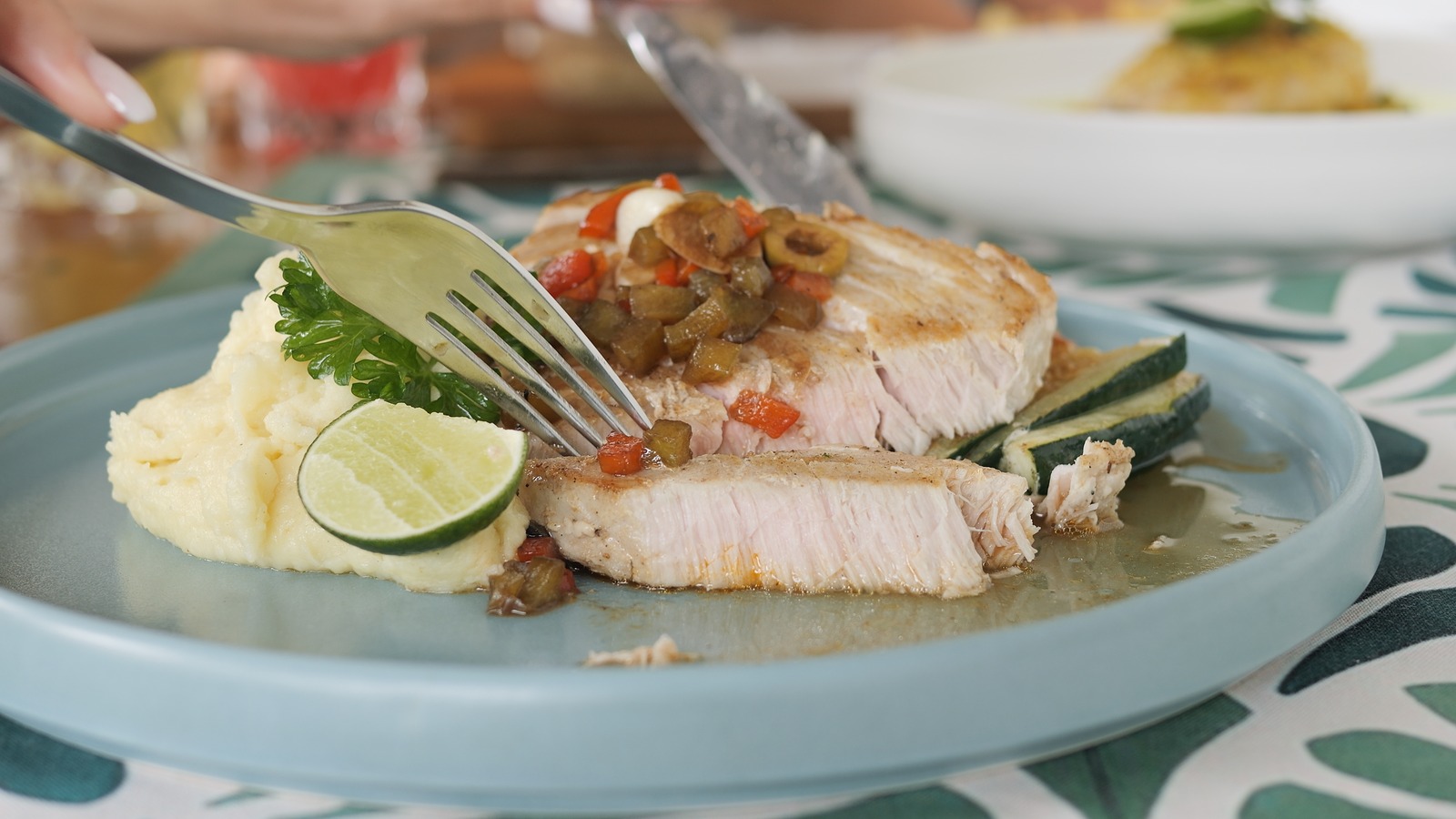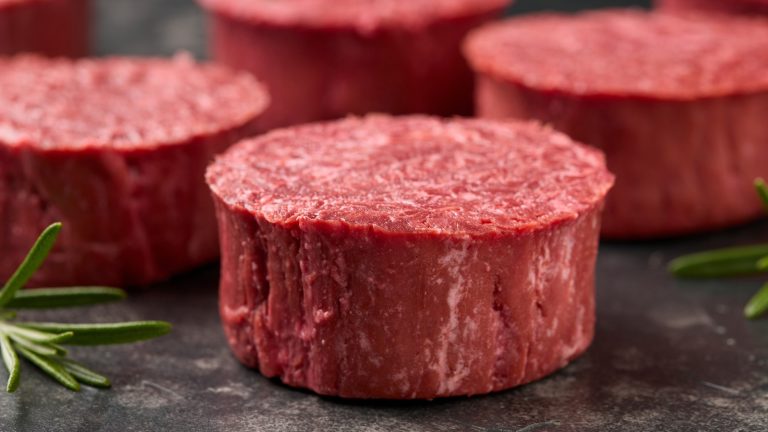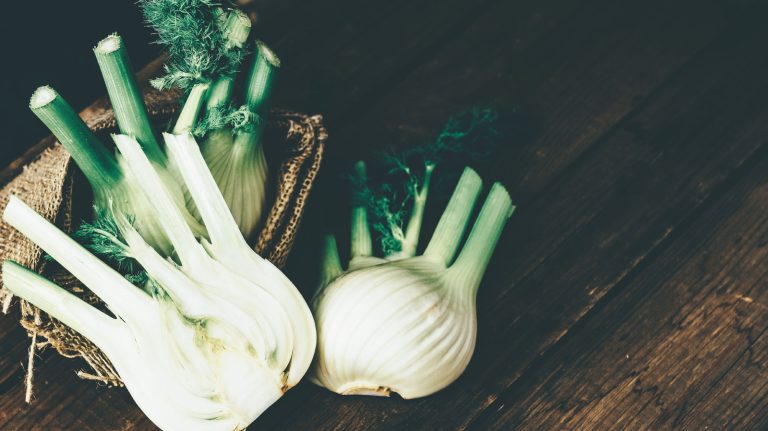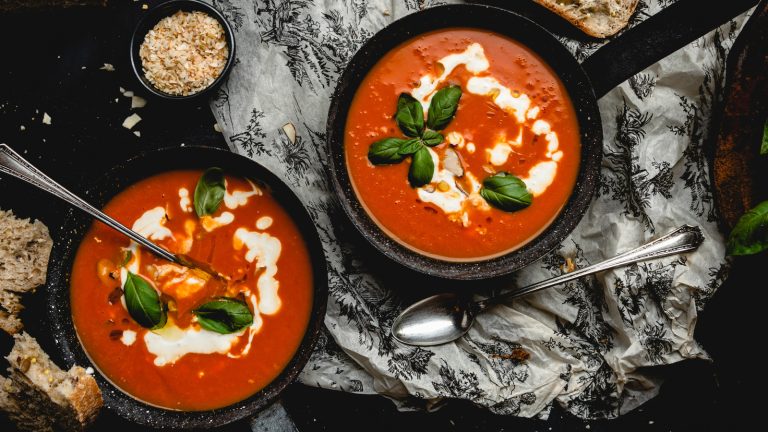We may receive a commission on purchases made from links.
There are so many different ways to cook fish. Check out the best fish to fry whole, make an herby lemon butter fish skillet, or put various cuts on the grill. Google any type of fish under the sun, and you’ll find countless potential recipes for it, from baking and steaming to searing and deep-frying. The question becomes: Which cooking method is best for which type of fish? And does it really matter?
The answer, of course, is yes. “Matching fish with the appropriate cooking type is crucial for achieving the best flavor, texture, and overall dining experience,” says Robert Smith, a private chef at Culinary Collective Atl. “Different species of fish possess varying fat content, firmness, and flavor profiles, which can significantly influence how they respond to various cooking methods.” Even if you’re unlikely to understand those nuances the way a professional chef would, you can still choose the right method to enhance the fish’s natural strong suits. Plus, Smith adds, the right cooking method also helps enhance safety.
Unfortunately, a lot of people are intimidated by the idea of experimenting with fish at home. The best way to get more confident? “Cook seafood more often!” says Rima Kleiner, a dietitian at Dish on Fish. “Try some of these cooking methods for the fish you’re making and have fun. And know that no matter which fish or cooking method you choose, you’ll be getting closer to the recommended two to three weekly servings of seafood and enjoying a heart-healthy protein.” With that in mind, here are the best ways to cook 12 types of fish, according to four experts.
Salmon: Pan-fried
Salmon is the second-most popular form of seafood in the United States, with Americans consuming 3.22 pounds per capita in 2022, according to the National Fisheries Institute. Only shrimp outperforms it, putting salmon at No. 1 for fish specifically. With so much salmon flowing through our dining rooms, most of us have encountered multiple cuts and cooking methods, so which is the best?
For this species, the chefs agree wholeheartedly: Pan-frying is where it’s at. “Pan-frying salmon is one of the quickest and most rewarding ways to cook this flavorful fish,” says Lauren Sampson, the protein-forward recipe developer behind Athlete Lunchbox. It’s ready in less than 15 minutes, she says, which is a major selling point for busy parents and working professionals. Moreover, “unlike baking or poaching, pan-frying gives you greater control over temperature and texture. When done right, it delivers crispy skin and a golden exterior, while keeping the interior silky and smooth.”
Plus, high heat helps caramelize the exterior while cooking the fish quickly enough to prevent tough flesh. This helps preserve the naturally buttery texture of the fish, Robert Smith says. Make sure when pan-frying salmon to use a pan that distributes heat well. The Lodge 9-Inch Cast Iron Pre-Seasoned Skillet or Utopia Kitchen 12-Inch Cast Iron Frying Pan will both do the trick.
Cod: Battered
In 2022, Americans ate 0.75 pounds of cod per capita, trailing well behind salmon but still hitting the National Fisheries Institute’s Top 10 list. When you think of cod, chances are excellent you think of a basket of fish and chips. There’s a reason for this: It’s one of the absolute best preparations for this flaky, delicate white fish.
“Cod’s mild flavor and firm texture make it ideal for battering and frying, creating a crispy exterior while keeping the inside tender,” Rima Kleiner says. “Think beyond stove frying if you want fried cod taste with less fat and mess — mist the breaded cod with olive oil and cook in the air fryer.” It’s a great way to make crunchy, no-fuss fish sticks, she says, which is also a fun way to experiment with slightly different cuts of fish.
If you want to make sure your fish cooks evenly, Robert Smith cautions, make sure you let it come to room temperature before frying. You should also use a cooking vessel that will heat the fat evenly throughout. A Lodge 6-Quart Enameled Cast Iron Dutch Oven with Lid will do that, while an Alpha Grillers Digital Meat Thermometer will test the temperature before you drop in pieces of battered fish.
Do note, says Oscar Diaz, a chef at the restaurants Little Bull, Aaktun, and TaTaco, that this isn’t the only good way to prepare cod, though. “I think pan-frying or baking is the best,” he says. “When baking or pan-frying, the fish is cooked with less oil than with battering. It will be fully tender, and you can really taste and appreciate the flavor.”
Tuna: Seared
If you’ve ever had lightly seared slices of tuna on a bed of field greens or atop a salade niçoise, then you know how heavenly it can be. “Searing tuna is ideal as it enhances its meaty flavor while keeping the center rare, preserving its delicate texture and rich taste,” Robert Smith explains. Like swordfish, tuna holds up well to high-heat treatments because it is so firm. Not only does the crust taste delicious, but this method of cooking tuna also cuts dinner prep way down … it’s usually done in less than 10 minutes, Rima Kleiner says.
But, she adds, you have to avoid a few missteps when cooking this fish if you want the best results. For one, make sure to avoid leaving it on the heat too long, which is among the common mistakes when cooking fish. Never skip the pat-dry step, either. “Moisture on the surface prevents a proper sear,” she says. “Patting fish dry before cooking helps achieve that golden, crisp exterior.” And lastly, don’t forget to season it well. Balanced seasoning is essential, so make proper use of salt, citrus, herbs, and aromatics to enhance the tuna’s natural flavor when you serve it. Also, don’t flip it too early, which can cause the crust to tear. A good tool, such as the OXO Good Grips Stainless Steel Fish Turner, can help avoid accidents.
“For leftover tuna,” Oscar Diaz adds, “I usually opt for confit, also known as cooking the fish in an oil with herbs and garlic and then enjoying it by shredding it onto a salad or mixing it with mayo for sandwiches.”
Trout: Baked
Trout is a relatively delicate fish that’s typically prepared in thin cuts, so in order to prepare it well, you need to account for this. Thus, the best method is one that doesn’t handle it too roughly and helps maintain its tenderness and moisture. Baking does both, Robert Smith says. It also enhances the trout’s natural flavors, Rima Kleiner adds.
However, pan-frying is a close second to baking. “Since trout is a thinner filet, you’ll want to utilize a cooking method that is quick and mitigates any room for overcooking,” Oscar Diaz explains. “Pan-frying is perfect because you can quickly crisp the skin, flip it, finish with butter, pull it off the pan, and enjoy.” This method also adds crisp skin for extra contrast, Kleiner adds.
With trout, as with any fish, make sure you pay attention to sourcing when you buy it. Freshness, quality, and sustainability all matter. “Sourcing fish from reputable suppliers or local markets can make a significant difference in flavor and texture,” Smith explains. If you don’t yet have a fishmonger who can answer your questions, it’s a good idea to get one (even if you often buy your fish from somewhere more affordable).
Mackerel: Pan-fried
Most Americans are a little bit *thinking-face emoji* when it comes to mackerel. Like, we’ve heard of it, but have we actually had it? Unfortunately, the answer is often not, but mackerel is an inexpensive fish you can’t afford to overlook, and it’s very simple to turn cuts of this oily fish into a tasty meal.
Why is pan-frying the best method? Because it’s “a great way to highlight its rich, oily nature, allowing the skin to crisp while keeping the flesh moist,” Rima Kleiner says. If you’re going to put it in a pan, though, remember that it needs to be nice and dry. “Moisture is the enemy of crispiness, so be sure to thoroughly pat the skin dry with paper towels,” Lauren Sampson advises. “This step is essential if you want that irresistible crunch.”
Mackerel has a few other applications to consider as well. “I really enjoy grilling it,” Oscar Diaz says. “You don’t want to cook over a direct flame, though — the oils will cause the flame to flare up and overcook the outside.” Instead, he says, place it on the cooler side of the grill or under a low flame, and cook it slowly. If you’re looking for a more hands-off cooking method, you can also bake it with a bit of broth or water, Kleiner says, which will keep it moist and enhance its flavor.
Orange roughy: Baked
Orange roughy, aka deep sea perch, is a brightly colored red-orange fish (hence the name) with a mild, sweet flavor and white flesh. Baking is one of the best ways to cook cuts of orange roughy because it helps to maintain moisture, which is an important consideration with such a delicate fish.
Baking is a clean, healthy preparation that complements the fish’s natural flavor and promotes even cooking. You’ll want to season it to bring those flavors out, Robert Smith says, but make sure not to go overboard: “Using too much seasoning or heavy sauces can overshadow the fish’s natural flavors, detracting from the dish’s overall appeal.”
There are a few other methods to consider here, however. Rima Kleiner likes steaming because it helps prevent the fish from drying out. Or, Oscar Diaz says, you could consider pan-frying. Heavy seasoning and then a turn in a hot pan create a flavorful result.
Tilefish: Seared
Similar in flavor to lobster or crab, tilefish is usually described as mild and sweet. It is a white fish that’s available much of the year, especially in the Gulf, and cuts of it are usually sold fresh. The best way to respect its delicate flavor and maintain its moisture is to sear it quickly in a hot pan.
“Tilefish’s firm flesh holds up well to high heat, creating a flavorful crust while keeping the inside juicy,” Rima Kleiner explains. Make sure when you sear fish to use oils that can withstand the heat without breaking down or smoking. Butter might taste good, but it can’t handle high temps in the same way. “Neutral oils (like avocado or grapeseed oil) are ideal for high-heat cooking, while butter works best for gentler methods like poaching or pan-frying,” she says. Options such as BetterBody Foods Refined Non-GMO Cooking Oil or Pompeian 100% Grapeseed Oil are good places to start.
Make sure when searing fish to “give each fillet room to breathe,” Lauren Sampson advises. “Crowding the pan drops the temperature, causing the fish to steam rather than sear. This leads to uneven cooking and soggy skin — not the crisp, golden sear you’re after.”
Bass: Grilled
Bass has a reputation for being a sweet, briny, and silky fish that needs little accompaniment in order to appeal to wide swaths of the population. Because cuts of bass are so good on their own, grilling is one of the best ways to show off the natural flavor and quality. “Bass is an oily fish that works well over a flame, so I love to grill it,” Oscar Diaz says. The oil in the fish helps the flames of the grill give it a light “kiss” on the outside, similar to lamb. He loves to then take grilled pieces of bass and use them to make an escabeche, a dish of fragrant and flavorful pickled vegetables and protein.
Also, while cod and halibut usually get all the credit when it comes to fish and chips, bass is another excellent specimen to dredge and deep-fry. “Battering bass offers a crisp texture that enhances its mild flavor, making it a popular choice for fish and chips,” Robert Smith says. However you prepare it, it’s helpful to keep an eye on sustainability and seasonality. “Different fish species have varying availability based on seasons and fishing practices, so being mindful of these factors not only supports responsible consumption but also enhances the culinary experience,” he says.
Tilapia: Pan-fried
Tilapia is another hugely popular seafood species in America, with the average person consuming 1.01 pounds in 2022, according to the National Fisheries Institute. It loses out only to the aforementioned shrimp and salmon as well as canned tuna. There are multiple reasons for this, from its mild flavor to its delicate texture and the wide availability of cuts — usually fillets — at your average grocery store. Adding to its popularity is the fact that the best way to cook it is a quick pan-fry.
“Tilapia’s mild flavor benefits from a quick pan-fry to add texture and depth,” Rima Kleiner says. “Just be sure to stand close to the tilapia while it’s cooking so it doesn’t overcook … and dry out.” Also, she says, make sure you’re not cooking it from cold. Taking it out of the fridge 15 minutes before cooking allows it to heat evenly, whereas cold fish seizes up in the pan. Kleiner loves lemon tilapia piccata, an update on the classic chicken piccata, for a flavor boost without much effort.
When pan-frying tilapia, patience pays off. “Especially when using a cast-iron skillet, don’t be tempted to flip prematurely,” Lauren Sampson says. “The skin will naturally release from the pan once it’s crisped up enough. If you force it too soon, the skin or delicate flesh may tear and stick.”
Sole: Pan-fried
If you’re a sole lover, like this writer, then you are well-acquainted with its tender flesh and light, sweet taste. Sole is a common fish to eat whole, and it is truly delicious when pan-fried. Thin, delicate cuts of this fish don’t do better than when thrown in a pan with a bit of seasoning. “All you need is butter, capers, and lemon for one of the most perfect dishes,” Oscar Diaz says. “There is simply no other way I will ever cook it.”
But make sure you don’t go too hard. “Sole’s delicate, flaky texture is best preserved with a light pan-fry, keeping it tender while adding a crisp edge,” Rima Kleiner says. If you use too much heat or aggressive handling, though, the sole will fall apart, so be careful. If you’re nervous you might overdo it, you can try one of her other favorite ways of cooking it: “Bake, allowing it to cook in its own juices — you’ll need less oil, and it will stay juicy!”
If you do want to pan-fry it but don’t want it to stick, Robert Smith suggests you look to your pan’s temperature. “Not ensuring the cooking surface is adequately preheated can lead to sticking or uneven cooking, further complicating the preparation process,” he says. Make sure your pan is at the right temperature before you throw the sole in.
Walleye: Grilled
Depending on where you live, walleye is either a fish with which you’re very familiar or one that makes you go, “Huh? Are we talking about that cute flying robot?” This writer lived in Chicago, where walleye was a common sight in grocery stores and specialty shops, as it is in many places across the continental United States, but you can also find this freshwater fish farther afield.
If so, you’re in luck. It’s mild, sweet, and delicate, and it lends itself perfectly to grilling. “Walleye’s firm flesh holds up well to grilling, developing a smoky depth while staying moist,” Rima Kleiner says, but don’t ignore carryover cooking. “Residual heat continues cooking fish after removing it from heat, so pulling it slightly before it’s done ensures a perfect doneness.” Be careful when grilling; tools such as the Cuisinart 13-Piece Wooden Grill Tool Set and Grill Heat Aid Premium Grill Gloves can help you stay safe, even around hot metal and flames.
Flounder: Baked
A serviceable white fish that you’ll find at many supermarkets, flounder is a tender and delicate specimen that does best in the oven. Baking preserves both of those qualities, leading to a flavorful result without overcooking it, Robert Smith says. However, make sure you follow your recipe’s instructions carefully, as flounder can overcook or become mushy quickly if you’re not careful. For this reason, steaming is also a good bet.
Oscar Diaz, however, prefers a different approach: “I’m a fan of battering, especially living here in the South now. It’s a good way to add a nice, crunchy component to a lighter fish that still holds its own while cooking,” he explains. “A nice cornmeal batter will crisp up deliciously, while keeping the flounder flaky and moist on the inside.” If you’re looking for yet another approach, Rima Kleiner is always a fan of pan-frying, which will “add a nice crispness to contrast its soft texture.”
Also, don’t forget that flounder — like other types of fish — goes well with a range of side dishes. “Pairing fish with complementary sides and sauces can elevate the dish, making it more enjoyable and well-rounded on the plate,” Robert Smith says. Do some research to see what types of sides work with your chosen species, cooking method, and family preferences, and remember to have fun!





